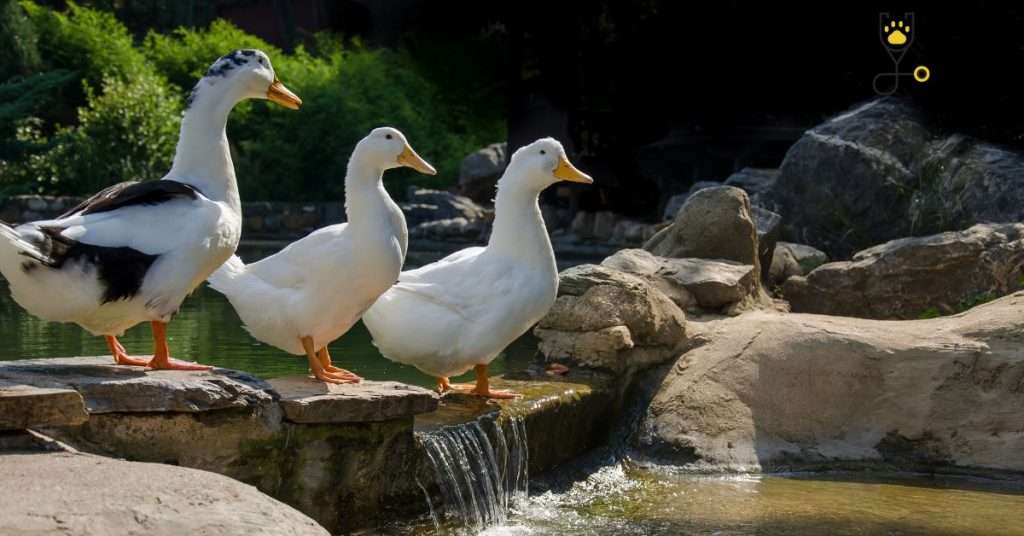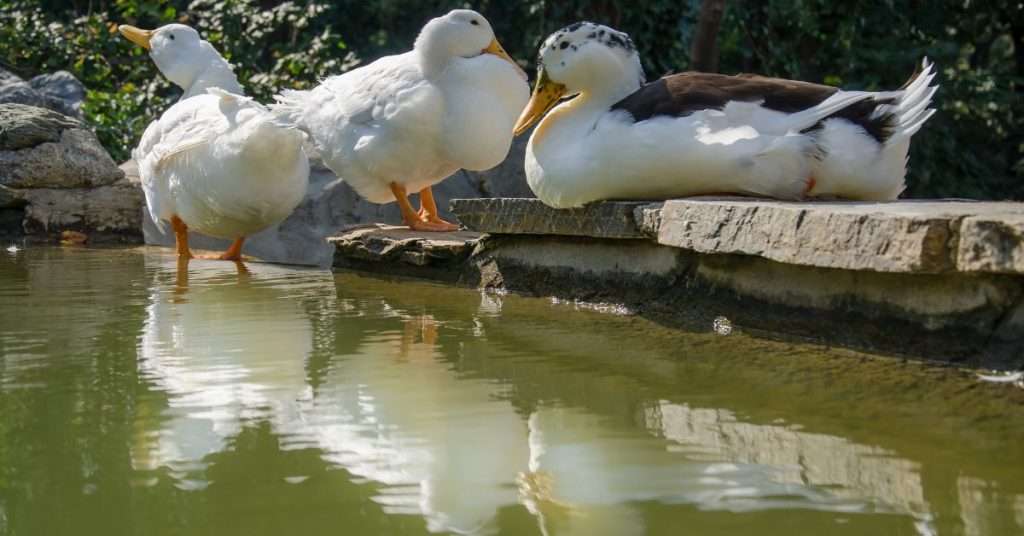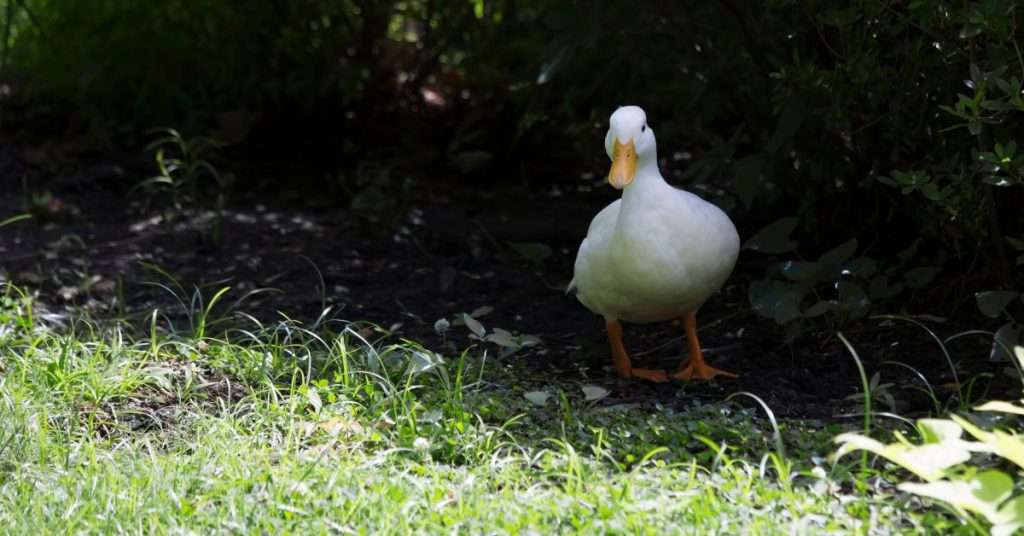Do you love the taste of duck? If so, you should consider getting a Pekin duck. They are one of the most popular breeds of ducks and they make great pets. In this article, we will provide you with all the information you need to know about Pekin ducks. We will cover everything from their temperament to their diet. So, whether you are thinking about getting a Pekin duck or just want to learn more about them.

About Pekin Duck
Pekin ducks are a type of large-breed, white-feathered, dabbling duck that was domesticated over 2000 years ago. Although the location of their origin is disputed, most agree it was probably somewhere in Southeast Asia.
Pekin ducks were likely introduced to Europe and North America in the 19th century, and they quickly became popular as both a source of food and as pets. Today, Pekin ducks are still widely kept as livestock, and they are also commonly used in research due to their docile nature.
In addition to their white plumage, Pekin ducks are characterized by their orange bills and legs. Adults typically weigh between 4 and 6 pounds, making them one of the largest breeds of duck.
When it comes to appearance, Pekin ducks are quite similar to mallards; however, they do not have the characteristic green head plumage of mallards. Pekin ducks are generally considered to be good-natured and easy to handle, making them a popular choice for those looking for a pet duck.
Learn More: How to Feed, Raise and Care for Baby Ducks
What Do They Eat?
Ducks are interesting creatures, and they have a variety of different behaviors when it comes to finding food. As scavengers, ducks will eat just about anything that will fit into their mouths.
This can include insects, small mammals, and even other birds. However, not all ducks are scavengers. Pekins are dabbling ducks, which means they get their food from land and the water’s surface rather than by diving underwater.
This behavior is more common in colder climates, where diving for food is more difficult. Pekins will typically eat aquatic plants, bugs, and small fish. Regardless of their feeding habits, ducks are an important part of the ecosystem and provide a valuable service to humans and other animals alike.

The Wild Diet
Though they are commonly associated with eating bread, ducks in the wild actually eat a wide variety of things. The type of food they eat depends on the time of year and their location. In the spring and summer, when insects are more plentiful, ducks will feast on flies, beetles, and other small invertebrates.
They also eat aquatic plants, such as water lilies and lotus flowers. In the fall and winter, when insects are scarce, ducks will eat acorns, nuts, and berries. They will also consume small fish, amphibians, and reptiles. While their diet varies depending on the season, one thing remains constant: ducks need a high-protein diet to stay healthy and well-fed.
Read More: How to Prepare Your Chicken Coop for Bad Weather
The Domestic Diet
Ducks are interesting creatures and usually, a duck on a farm can find most of its food. That being said a healthy diet for a duck should be supplemented with traditional poultry feed. There are a few reasons for this, the first being that ducks need more niacin than what their diet would otherwise provide.
Niacin is essential for ducks because it helps them metabolize fats and protein. In addition, poultry feed typically contains more calcium than what is found in nature.
This is important because calcium helps ducks to develop strong bones and shells. Lastly, poultry feed can help to keep ducks’ digestive systems healthy by providing them with essential vitamins and minerals. While ducks can certainly get by without supplements, a healthy diet will help them to thrive.
For Good Eggs: A diet rich in calcium is important for ducks that are laying eggs. This is because calcium helps to form strong shells. Without enough calcium, ducks will lay eggs with thin, weak shells that are more likely to break.
Ducks that are fed a diet of mostly bread and other grains will not get the calcium they need and as a result, will lay fewer and lower-quality eggs. A diet of poultry feed or other supplements will help ducks to lay strong, healthy eggs.
How Do I Set Up Their Home?
Pekin ducks are a popular choice for backyard poultry enthusiasts. They are known for their egg production, friendly personalities, and lean meat. If you’re thinking of adding Pekins to your flock, there are a few things you need to know about their housing requirements.
- Pekins need a spacious enclosure with plenty of room to forage and exercise.
- They also prefer to nest in elevated areas, so their housing should include a raised platform or nesting box.
- In addition, Pekins require access to fresh water for drinking and bathing.
- A waterer with a large surface area is ideal, as it will prevent the water from becoming dirty too quickly.
With proper housing and care, Pekins can make excellent additions to any flock.

Most Famous Pekin Ducks
- American Pekin
- German Pekin
- Cayuga Duck
- Blue Swedish Duck
- White Pekin Duck
Read More: Why Eggs are Different Colours In Chicken
Egg and Weight Comparison by Breed Variety
Egg production among ducks can vary significantly by breed.
While some ducks may lay as few as 20 eggs per year, others can lay more than 200.
The average Pekin duck will lay between 80 and 100 eggs per year.
Pekins are also one of the largest breeds of ducks, with males typically weighing between 8 and 10 pounds.
Cayuga ducks are another large breed, with males averaging 9 pounds.
Egg production among Cayuga ducks is slightly lower than that of Pekins, with most Cayugas laying between 60 and 80 eggs per year.
Swedish ducks are a smaller breed, with males averaging only 6 pounds.
Despite their small size, Swedish ducks are prolific egg-layers and can lay up to 200 eggs per year.
When choosing a breed of duck for your flock, be sure to consider both egg production and body size.
Pekin ducks are a good choice for those looking for a large duck with good egg-laying ability.